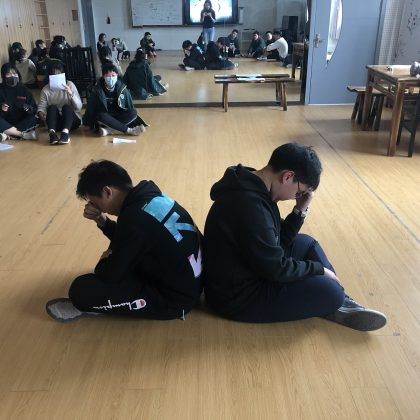The End of Theatre Groups?
TDR’s (delayed) Fall 2024 issue (67, 3) features a retrospective on SITI Company, which began in 1992 and disbanded in 2022. Also in 2022, the Workcenter of Jerzy Grotowski and Thomas Richards centered in Pontedera, Italy, shut down after 35 years of intrepid work (see TDR 66, 3:194–95). The same year, in Denmark, after what seemed to be a bitter feud, Eugenio Barba left the Nordisk Teaterlaboratorium (NTL), which he founded in 1964. He took with him some key collaborators and the name Odin Teatret. Each of these groups has an extraordinary legacy—the impact and effects of their work will reverberate through the coming years. TDR has published numerous articles about and by Grotowski, the Workcenter, Barba, and Odin.
These events enact the end of the theatre’s most recent epoch of groups. Not every group is gone. The Wooster Group, El Teatro Campesino, and Mabou Mines remain, as do significant groups in Europe such as Forced Entertainment and Gob Squad. Brilliant performance-makers such as Milo Rau, Moisés Kaufman, Rachel Chavkin, Jérôme Bel, and many others bring forth new works. But they do not lead groups that work together exclusively as did The Living Theatre, The Open Theater, The Ridiculous Theatrical Company, The Performance Group, and a plethora of others globally. The shuttering of SITI, the Workcenter, and the NTL was not due to Covid. But at the same time these groups ceased, Covid squeezed live theatre, causing many theatres to suspend operations. When Covid subsided, or, as in the US, when the social damage from closing came to be worse than the health threat of assembling, many theatres either did not re-open, or opened with reduced budgets, audiences, and artists. Even movie theatres were hit as at-home streaming and viewing replaced going out for popcorn and the large silver screen. It seems to me that two seemingly unrelated phenomena converged—the end for a “need” for groups and the pandemic—both resulting in fewer performance groups, fewer theatres.
Maintaining groups is very expensive. But there’s more to these endings and closings than money, or rather the lack thereof. Underlying the formation of performance groups was the belief that artists would produce more important work collectively; corollary to that, working in a group would amplify the creative energy and hone the skills of individuals. Yes, there would be struggles for power and conflicting objectives, but this would be offset by group-made works that expressed something other than the “me,” that spoke to community and even universal issues and concerns. In a phrase, the whole exceeded the sum of its parts.
All of the above feels quaint, outdated, not about now. In today’s world, the collective has yielded to the corporate. Individuals move up inside corporate structures; and corporations prioritize profits. If a work or an artist is original and creative and is financially successful, all the better; if there is a choice between profitability and artistic originality, profitability wins. That’s why so many ideas are “franchised,” reproduced and widely distributed (think of the Marvel superheroes). The corporate world, and the theory underlying it, is top-down, not bottom-up (participatory democracy) or even horizontal (the old-fashioned factory). The driving idea is that people and digital operations are interchangeable. People are not-so-efficient computers. Sooner or later, only AI remains. The pressure on creative artists is to repeat what makes them successful, not go out on another limb.
Additionally, government support for the arts has fallen both in absolute numbers and as a proportion of spending. On top of this, since 2019, Covid has forced artists to work online and at a distance. Even as the virus has been familiarized, morphed from epidemic to endemic, the move to online performing arts continues. I am not against this—except insofar as it works against in-person, for-audiences performances. How this will work out over time remains an open question.
What could be further from The Living Theatre, the Grotowski search for the “vertical connection,” the “theatre anthropology” of Eugenio Barba than Zoom performances and corporate operations? For all that, I am not nostalgic. Even at my advanced age, I do not yearn for the time that was. I seek nourishment in contemporary activity. But I do note that the times are, as always, a-changin’. The brilliance in performance I once found in the work of groups, I now find in tightly-knit teams of “core artists,” such as those assembled by Moisés Kaufman in his Tectonic Theater, or by the brilliantly “easy” verbal performances of John Collins’s Elevator Repair Service, and the continuing work of Rachel Chavkin’s The Team. These kinds of “now we get together, now we work apart” configurations are where I find the strongest performances these days. And in the productions of brilliant directors such as Jamie Lloyd’s A Doll’s House), Chavkin’s Natasha, Pierre, & The Great Comet of 1812 and Hadestown. As I write this blog, I realize that today’s artists often gather the same people over and over—networks rather than formally constituted groups.
So maybe groups are not dead. Maybe they’ve rhizomed.
For more like this, read the latest issue of TDR.







Amazing issues here. I’m very satisfied to see your post.
Thank you so much and I’m taking a look forward
to touch you. Will you please drop me a e-mail?